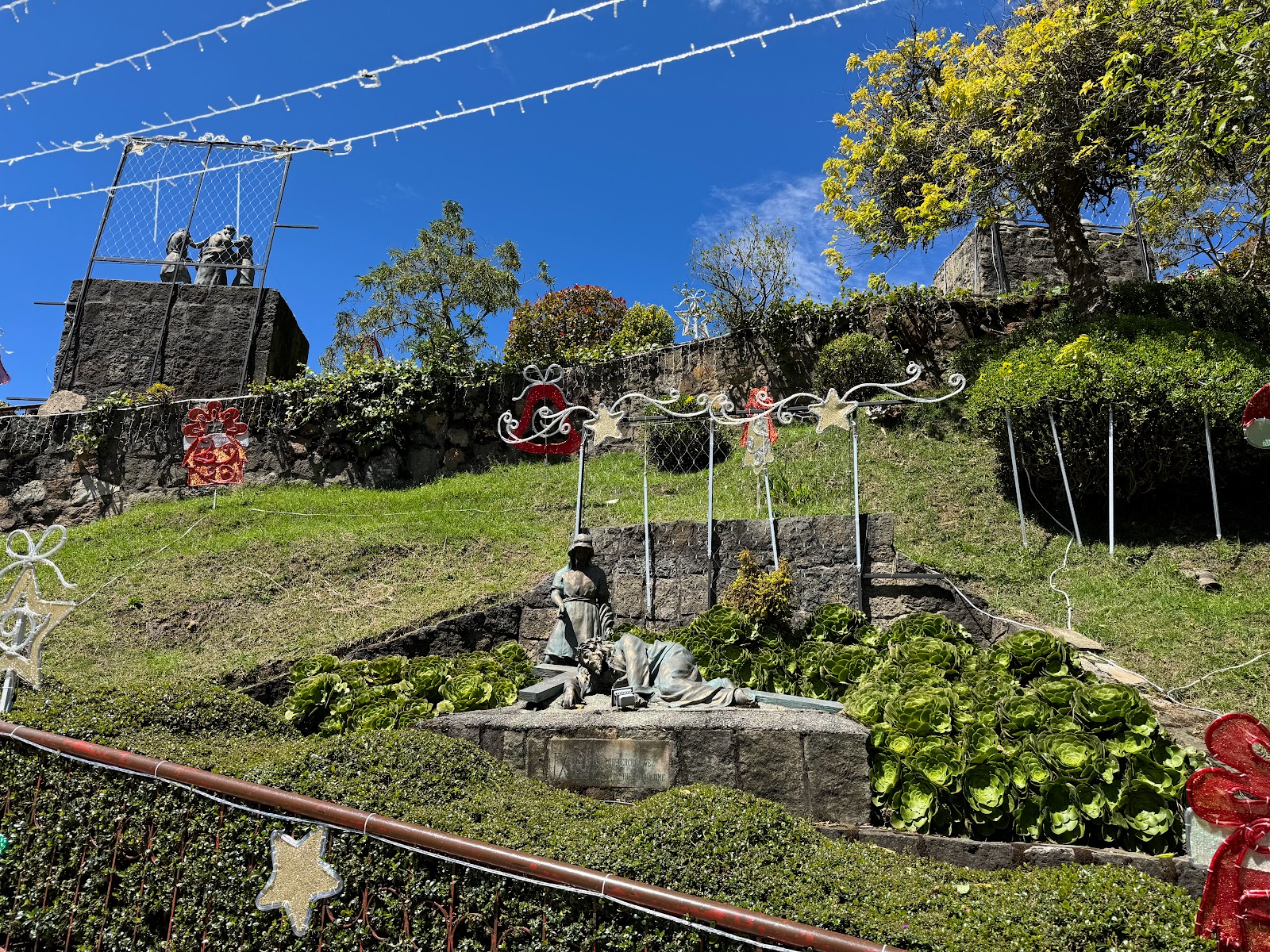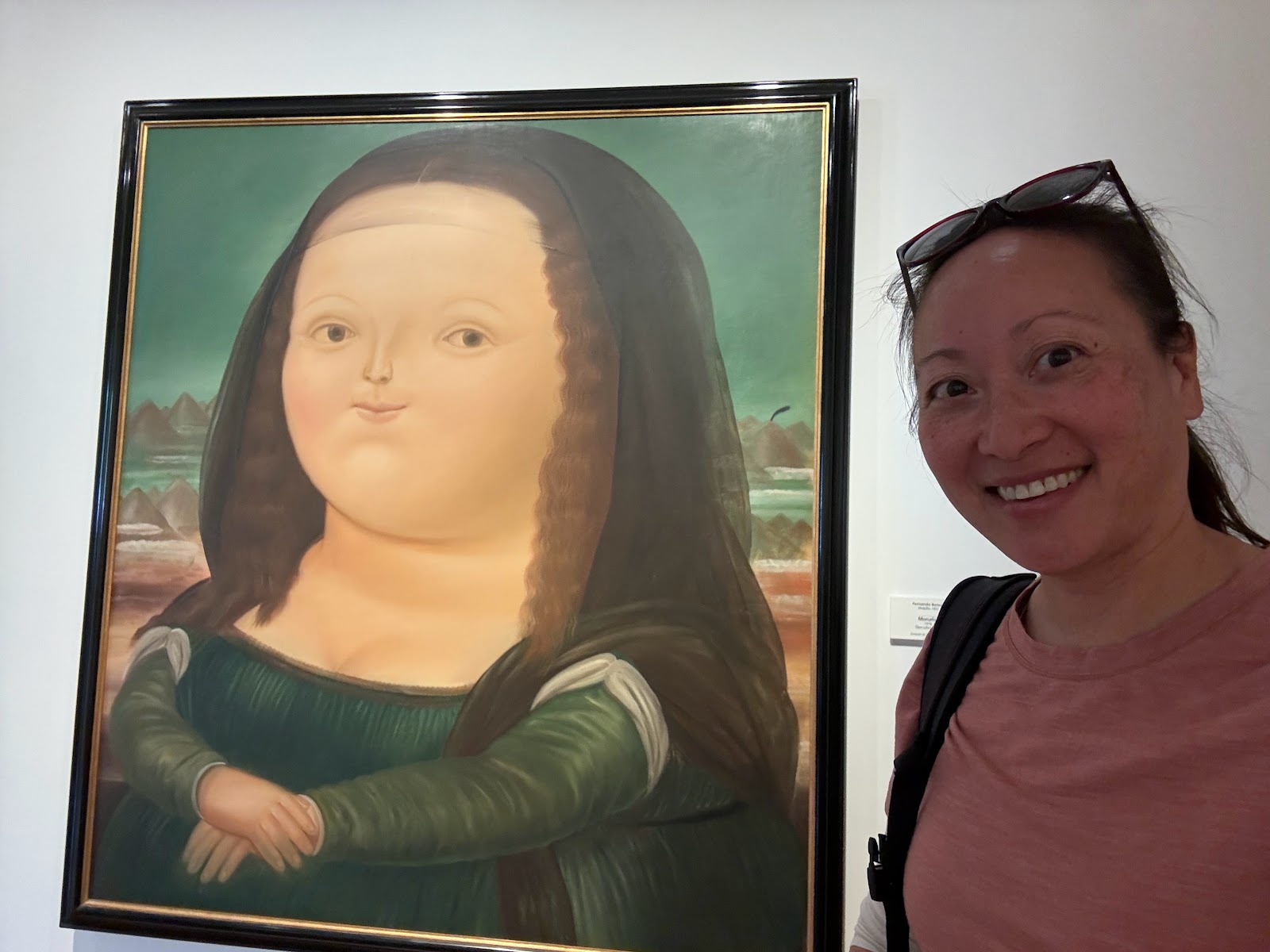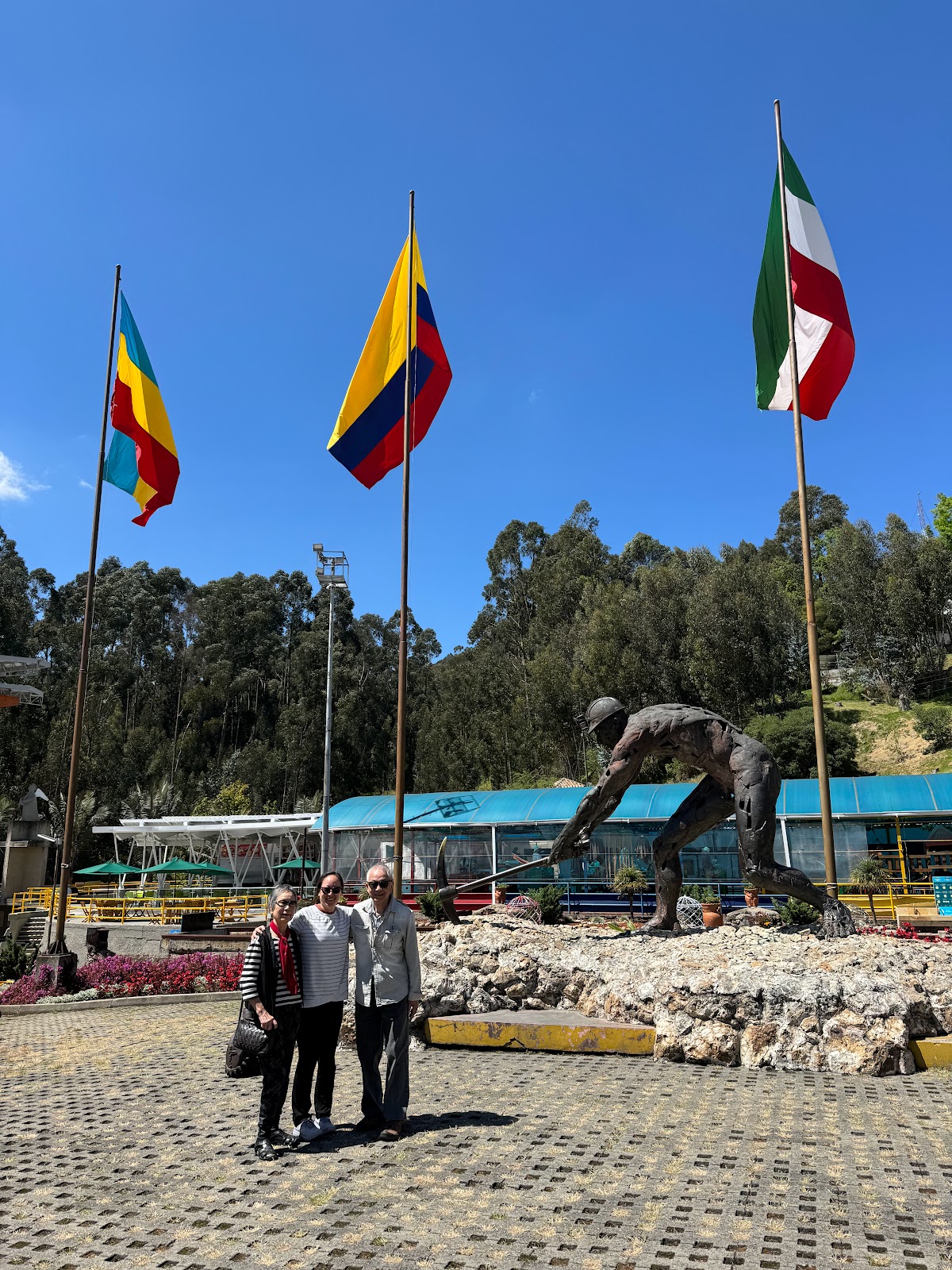In the early 1960’s, my mom migrated from Taiwan to Colombia to work in an upscale hotel in downtown Bogotá. Almost two years later she moved to the United States to marry my dad – and never looked back. I remember in high school asking her whether she wanted to visit, but back in the 80’s and 90’s, Colombia definitely was NOT the place one went for tourism. So this past Thanksgiving, I invited my parents on a Colombia/Panama Nat Geo Lindblad expedition, traveling the Caribbean coast from Cartagena through the Panama Canal. We’d go a few days early to visit Bogotá, to see if my mom recognizes any part of the city she lived in 60 years ago. (Spoiler alert – she doesn’t.)
Usually when I mention my Colombia trip, people assume I’m a drug mule. It's really unfortunate that Colombia’s reputation as a hotbed of crime precedes it. The cocaine trade beginning in the 1960s - and particularly the rise of the Medellín and Cali Cartels - made several cities in Colombia the most violent in the world. But 20 years ago there was a big push by the Colombian government to make the country safer. The US war on drugs stemmed the desire for cocaine. Bogotá now has a lower violent crime rate than many US cities.
* * * * * * * * * * * * * * * * * * * * * * * * * * *
*Fun Fact Break*
Medellín Cartel founder Pablo Escobar was once the wealthiest criminal in history with a net worth of around US$70 billion dollars in today’s money. He had his own zoo with 4 hippopotamuses – and hippos, while mostly vegetarian, are extraordinarily territorial, highly aggressive, and are among the deadliest animals in the world. When Escobar was killed in 1993, the hippos were too expensive to deal with, so they were left to wander his estate. They have now multiplied to a population of over 160 “cocaine hippos” whose range has spread into the neighboring territories. These hippos are feeding heavily on plants, displacing native species, and even attacking humans. Just this month, the Colombia government began a massive plan to control the hippo population.And you thought “Cocaine Bear” was over the top…
* * * * * * * * * * * * * * * * * * * * * * * * * * *
The capitol city of Colombia, Bogotá, is situated on a high plateau in the Andes mountains known as the Bogotá Savanna. It was founded by Spanish conquistadors in the 1530s after their expedition conquered the indigenous Muisca people. Basically, a bunch of outsiders came in search of El Dorado – the fabled city of gold – and even though they didn’t find it, they decided to stay and take over.
We arrived late at night in Bogotá after a long day of travel but made it safely to Casa Legado. It is a lovely boutique hotel, with fun and funky decorations and hot water bottles warming our beds! Breakfast was delicious, and mom said the Colombia coffee was fantastic – I even tried some, even though I don’t normally drink coffee. (The verdict: tastes like coffee!)
We were picked up in the morning for our city tour by Nicolas, who first took us up to Monserrate. It’s a 10,000 ft high mountain overlooking the city, with a 17th century church on top.
 |
| Fallen Jesus |
 |
| One of the stations (don't ask me which one) |
After riding the funicular back down the mountain, we headed to La Candelaria, the Old City. We started by having a fruit and juice tasting, which was a great way to experience the different tropical fruits of Colombia. There were several that we’ve never tried, and it was fun seeing and tasting the many different types of passionfruit and guavas. We also tried feijoa (pineapple guava), guanabana, lulo, dragonfruit, uchuva, zapote, and tree tomatoes.
We stopped at Plaza del Chorro del Quevedo, which was supposedly the place where Bogotá was founded in 1538 by the Spanish conquistador Gonzalo Jimenez de Quesada. (Of course the head of the indigenous Muiscas hung out there long before the Spaniards got there, but hey. Who's counting?)
Wandering around La Candelaria also highlighted the influence of the different settlers on the buildings' architectural styles such as Spanish Colonial Baroque and art deco.
From there we went to the Botero museum, which was an awesome colonial mansion turned art museum, highlighting the works of renown artist Fernando Botero. His work depicts figures in his signature style – with lots of volume. The pieces are fun and interesting – you can’t help but smile when you look at them!
Our next stop was the Plaza de Bolívar, the main square surrounded by the city hall, National Capitol, Palace of Justice, and Cathedral of Bogotá. It's a huge concrete space that is the site for many gatherings, and a huge flock of pigeons happily gather, fed by tourists. At the center of the plaza stands a statue of Simón Bolívar.
Did you know? Simón Bolívar was the Venezuelan leader that freed Colombia (along with Venezuela, Ecuador, Peru, Panama, and Bolivia) from the Spanish Empire. Nicknamed El Libertador (the Liberator), Bolívar is such a key historical figure that pretty much every major city (and even many of the minor ones) in all those countries have a plaza or park honoring Bolívar.
From there, we had a traditional Colombian meal of sancocho (a rich chicken soup thickened with three types of potatoes), roast chicken, and seafood rice. There was waaaaay too much food, so we had enough to take the leftovers back for dinner!
The last stop of the day was the Gold museum, which had a fascinating display of pre-Colombian treasures as well as exhibits on metallurgy and symbolism. Colombia is famous for its gold, particularly because the famed city of El Dorado was supposedly located somewhere near Bogotá. According to legend, a Muisca tribal leader was witnessed covering himself with gold dust and throwing gold and treasures into Lake Guatavita as an initiation rite. This display of excess caused the witnesses to believe they must have a city of gold, enough that they could just throw it away. The most famous pieces in the Gold museum depicts this legendary raft.
Our second full day started with another delicious breakfast at Casa Legado followed by a trip just outside of the city to Zipaquirá. Along the way, we made a quick stop at the Puente del Común in Chia, original Spanish bridge over the River Bogotá. It was built in 1796 and was once the only way to cross the river into the city.
In Zipaquirá, we visited the famed Salt Cathedral, built 200 meters underground in an old salt mine. The rock salt found here was deposited around 250 million years ago when the area was covered by the ocean. The deposits were then uplifted when the Andes mountains were formed during the breakup of Pangaea. These mines were first used by 5th century indigenous Muiscas to collect the rock salt.
 Before the original underground church was built, there was first a sanctuary where the miners gathered for daily prayers to ask for protection. The original Salt Cathedral was completed in 1954, and a new cathedral was inaugurated in 1995. During the walk down, there are 14 small chapels representing the stations of the cross – which I now know all about! The current Salt Cathedral consists of three huge chambers with attached galleries. The three naves represent the birth, life, and death of Jesus – the cross on the main altar is the largest underground cross in the world.
Before the original underground church was built, there was first a sanctuary where the miners gathered for daily prayers to ask for protection. The original Salt Cathedral was completed in 1954, and a new cathedral was inaugurated in 1995. During the walk down, there are 14 small chapels representing the stations of the cross – which I now know all about! The current Salt Cathedral consists of three huge chambers with attached galleries. The three naves represent the birth, life, and death of Jesus – the cross on the main altar is the largest underground cross in the world. We made it back to the hotel a little after 2, which gave us a leisurely afternoon to relax and enjoy the gardens at Casa Legado. We had tea while we played mah jongg in one of the courtyards (where I promptly lost one card before we even started when it fell through the crack between the wood slats. Le sigh.)
Overall, Bogotá is a wonderful city with great food, friendly people, and a fun and artistic vibe. It has changed a lot over the years - to the point where it was unrecognizable by my mom. Even though it is one of the largest cities in the world, the charming neighborhoods and vibrant streets make it inviting and accessible. Overall, I highly recommend!














No comments:
Post a Comment